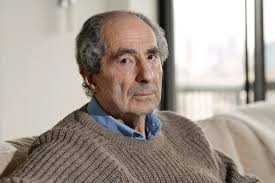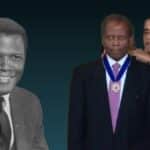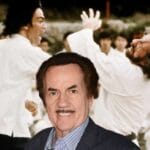 Philip Roth, the prolific, protein, and often blackly comic novelist who was a pre-eminent figure in 20th-century literature, died on Tuesday night at a hospital in Manhattan. He was 85.
Philip Roth, the prolific, protein, and often blackly comic novelist who was a pre-eminent figure in 20th-century literature, died on Tuesday night at a hospital in Manhattan. He was 85.
The cause of his death was congestive heart failure, said writer Judith Thurman, a close friend.
In the course of a very long career, Mr. Roth took on many guises — mainly versions of himself — in the exploration of what it means to be an American, a Jew, a writer, a man. He was a champion of Eastern European novelists like Ivan Klima and Bruno Schulz, and also a passionate student of American history and the American vernacular. And more than just about any other writer of his time Roth was tireless in his exploration of male sexuality. His creations include Alexander Portnoy, a teenager so libidinous he has sex with both his baseball mitt and the family dinner, and David Kepesh, a professor who turns into an exquisitely sensitive 155-pound female breast.
Mr. Roth was the last of the high white males: the triumvirate of writers — Saul Bellow and John Updike were the others — who towered over American letters in the second half of the 20th century. Outliving both and borne aloft by an extraordinary second wind, Mr. Roth wrote more novels than either of them. In 2005 he became only the third living writer (after Bellow and Eudora Welty) to have his books enshrined in the Library of America.
“Updike and Bellow hold their flashlights out into the world, reveal the world as it is now,” Mr. Roth once said. “I dig a hole and shine my flashlight into the hole.”
The Nobel Prize eluded Mr. Roth, but he won most of the other top honors: two National Book Awards, two National Book Critics Circle awards, three PEN/Faulkner Awards, a Pulitzer Prize and the Man Booker International Prize.
Philip Roth got honored with the 2011 Medal of Art. President Barack Obama awards 2011 Medal of Art and Humanities at The White House, Washington DC, America – 02 Mar 2011 People we lost in 2018
Slideshow by photo services
In his 60s, an age when many writers are winding down, he produced an exceptional sequence of historical novels — “American Pastoral,” “The Human Stain” and “I Married a Communist” — a product of his re-engagement with America and American themes. And starting with “Everyman” in 2006, when he was 73, he kept up a relentless book-a-year pace, publishing works that while not necessarily primary were nevertheless fiercely intelligent and sharply observed. Their theme in one way or another was the ravages of age and mortality itself, and in publishing them, Mr. Roth seemed to be defiantly staving off his decline.
Mr. Roth was often lumped together with Bellow and Bernard Malamud as part of the “Hart, Schaffner & Marx of American letters,” but he resisted the label. “The epithet American-Jewish writer has no meaning for me,” he said. “If I’m not an American, I’m nothing.”
And yet, almost against his will sometimes, he was drawn again and again to writing about themes of Jewish identity, anti-Semitism and the Jewish experience in America. He often returned, especially in his later work, to the Weequahic neighborhood of Newark, where he grew up and which became in his writing a kind of vanished Eden: a place of middle-class pride, frugality, diligence, and aspiration.
It was a place where no one was unaware “of the power to intimidate that emanated from the highest and lowest reaches of gentile America,” he wrote, and yet where being Jewish and being American were practically indistinguishable. Speaking of his father in “The Facts,” an autobiography, Mr. Roth said: “His repertoire has never been large: family, family, family, Newark, Newark, Newark, Jew, Jew, Jew. Somewhat like mine.”
Mr. Roth’s favorite vehicle for exploring this repertory was himself, or preferably one of several fictional alter egos he deployed as a go-between, negotiating the tricky boundary between autobiography and invention and deliberately blurring the boundaries between real life and fiction. Nine of Mr. Roth’s novels narrated by Nathan Zuckerman, a novelist whose career closely parallels that of his creator. Three more also narrated by David Kepesh, a writer academic who shares some of Mr. Roth’s preoccupations, women especially. And sometimes Mr. Roth dispensed with the disguise altogether.
The protagonist of “Operation Shylock” is a character named Philip Roth, who is being impersonated by another character, who has stolen Roth’s identity. At the center of “The Plot Against America,” a book that invents an America where Charles Lindbergh wins the 1940 presidential election and initiates a secret pogrom against Jews, is a New Jersey family named Roth that resembles the author’s in every particular.
“Making fake biography, false history, concocting a half-imaginary existence out of the actual drama of my life is my life,” Mr. Roth told Hermione Lee in a 1984 interview in The Paris Review. “There has to be some pleasure in this life, and that’s it.”
Mr. Roth’s other great theme was sex, or male lust, which in his books is both a life force and a principle of rage and disorder. It is sex, the uncontrollable need to have it, that torments poor, guilt-ridden Portnoy, probably Mr. Roth’s most famous character, who desperately wants to “be bad — and to enjoy it.” And Mickey Sabbath, the protagonist of “Sabbath’s Theater,” one of Mr. Roth’s major late-career novels, is in many ways Portnoy grown old but still in the grip of lust and longing, raging against the indignity of old age and yet saved from suicidal impulses by the realization that there are too many people he loves to hate.
In public, Mr. Roth, tall and good-looking, was gracious and charming but with little use for small talk. In private he was a gifted mimic and comedian. Friends used to say that if his writing career had ever fizzled, he could have made an excellent living doing stand-up. But there was about his person, as about his writing, a kind of simmering intensity, an impatience with art that didn’t take itself seriously.
Some writers “pretend to be more lovable than they are and some pretend to be less,” he told Ms. Lee. “Beside the point. Literature isn’t a good beauty contest. Its power arises from the authority and audacity with which the impersonation is pulled off; the belief it inspires is what counts.”
Philip Milton Roth was born in Newark on March 19, 1933, the younger of two sons. (His brother, Sandy, a commercial artist, died in 2009.) His father, Herman, was an insurance manager for Metropolitan Life who felt that his career had to become thwarted by the gentile executives who ran the company. Mr. Roth once described him as a cross between Captain Ahab and Willy Loman. His mother, the former Bess Finkel, was a secretary before she married and then became a housekeeper of the heroic old school — the kind, he once suggested, who raised cleaning to an art form.
The family lived in a five-room apartment on Summit Avenue within which were only three books when he was growing up — given as presents when someone was ill, Mr. Roth said. He went to Weequahic High, where he was a good student but not good enough to win a scholarship to Rutgers, as he had hoped. In 1951 he enrolled as a pre-law student at the Newark branch of Rutgers, with vague notions of becoming “a lawyer for the underdog.”
But he yearned to live away from home, and the following year he transferred to Bucknell College in Lewisburg, Pa., a place about which he knew almost nothing except that a Newark neighbor seemed to have thrived there. Inspired by one of his professors, Mildred Martin, with whom he remained a lasting friend, Mr. Roth switched his interests from law to literature. He helped found a campus literary magazine, wherein an early burst of his satiric power he published a parody of the college newspaper so devastating that it earned him a warning from the dean.
Mr. Roth graduated from Bucknell, magna cum laude, in 1954 and won a scholarship to the University of Chicago, where he was awarded an M.A. in 1955. That same year, rather than wait for the draft, he enlisted in the Army but suffered a back injury during basic training and received a medical discharge. In 1956 he returned to Chicago to study for a Ph.D. in English but dropped out after one term.
Mr. Roth had begun to write and publish short stories by then, and in 1959 he won a Houghton Mifflin Fellowship to release what became his first collection, “Goodbye, Columbus.”
In 1962, while appearing on a panel at Yeshiva University, Mr. Roth was so denounced, for that story especially, that he resolved never to write about Jews again. He quickly changed his mind.
“My humiliation before the Yeshiva belligerents — indeed, the angry Jewish resistance that I aroused virtually from the start — was the luckiest break I could have had,” he later wrote. “I was branded.”
Mr. Roth later called his first two novels “apprentice work.” “Letting Go,” published in 1962, was derived in about equal parts from Bellow and Henry James. “When She Was Good,” which came out in 1967, is the most un-Rothian of his books, a Theodore Dreiser- or Sherwood Anderson-like story set in the WASP Midwest in the 1940s.
“When She Was Good” was based in part on the life and family of Margaret Martinson Williams, with whom Mr. Roth had entered a calamitous relationship in 1959. Ms. Williams, who was divorced and had a son and a daughter, met Mr. Roth while she was waiting tables in Chicago, and she tricked him into marriage by pretending to be pregnant. He was “enslaved” to her sense of victimization, he wrote. They separated in 1963, but Ms. Williams refused to divorce, and she remained a vexatious presence in his life until she died in a car crash in 1968. (She appears as Josie Jensen in “The Facts” and, more or less undisguised, as the exasperating Maureen Tarnopol in Mr. Roth’s novel “My Life as a Man.”)
After the separation, Mr. Roth moved back East and began work on “Portnoy’s Complaint,” the novel for which he may be best known and which undoubtedly set a record for most masturbation scenes per page. It was a breakthrough not just for Mr. Roth but for American letters, which had never known anything like it. An extended, unhinged monologue, at once filthy and hilarious, by a neurotic young Jewish man trying to break free of his suffocating parents and tormented by a longing to have sex with gentile women, shiksas.
The book was “an experiment in verbal exuberance,” Mr. Roth said, and it deliberately broke all the rules.
The novel, published in 1969, became a best seller but received mixed reviews. Josh Greenfeld, writing in The New York Times Book Review, called it “the very novel that every American-Jewish writer has been trying to write in one guise or another since the end of World War II.” On the other hand, Irving Howe (on whom Mr. Roth later modeled the pompous, stuffy critic Milton Appel in “The Anatomy Lesson”) wrote in a lengthy takedown in 1972, “The cruelest thing anyone can do with ‘Portnoy’s Complaint’ is read it twice.”
And once again the rabbis complained. Gershom Scholem, the great Kabbalah scholar, declared that the book was more harmful to Jews than “The Protocols of the Elders of Zion.”
Mr. Roth’s autobiographical phase began in 1974 with “My Life as a Man,” which he said was probably the least factually altered of his books, and continued with the Zuckerman trilogy — “The Ghost Writer” (1979), “Zuckerman Unbound” (1981) and “The Anatomy Lesson” (1983) — which examined the authorial vocation and even the nature of writing itself.
For much of this time, Mr. Roth had been spending half the year in London with the actress Claire Bloom, with whom he began living in 1976. They married in 1990 but divorced four years later. In 1996, Ms. Bloom published a memoir, “Leaving the Doll’s House,” in which she depicted him as a misogynist and control freak, so self-involved that he refused to let her daughter, from her marriage to the actor Rod Steiger, live with them because she bored him.
Never fond of attention, Mr. Roth became even more reclusive after this accusation and never publicly replied to it, though he privately denied it. Some critics found unflattering parallels to Ms. Bloom and her daughter in the characters Eve Frame and her daughter, Sylphid, in “I Married a Communist.”
The marriage over, Mr. Roth moved permanently back to the United States and began what proved to be the third primary phase of his career. He returned, he said, because he felt out of touch: “It was my rediscovering America as a writer.”
“Sabbath’s Theater,” which came out in 1995 and won the National Book Award, is about neither Roth nor Zuckerman but rather Morris Sabbath, known as Mickey, an ex-puppeteer in his 60s. His voice is nothing if not American: an angry, comic, lustful harangue.
“In this new book life is represented as anarchic horniness on the rampage against death and its harbingers, old age, and impotence,” Frank Kermode wrote in The New York Review of Books, adding, “There is only one way for him to tell the story — defiantly with outraged phallic energy.”
Zuckerman returns as the narrator of all three novels, but he is in his 60s now, impotent and suffering from prostate cancer. His prose is more understandable, crisper, less show-offy, and he is less an actor than an observer and interpreter.
The books are full of dense reportorial detail — about such seemingly un-Rothian subjects as glove making and ice fishing — as they tell Job-like stories. There is Swede Lvov, a seemingly gilded Newark businessman, a gifted athlete married to Miss New Jersey of 1949, whose life is destroyed in the 1960s when his teenage daughter becomes an antiwar terrorist and plants a bomb that kills an innocent bystander. Ira Ringold is a star of a radio serial during the McCarthy era who is blacklisted and becomes the subject of an exposé published by his wife. And Coleman Silk, a black classics professor passing as white, commits an innocent classroom gaffe while the Clinton impeachment is taking place and finds himself mercilessly hounded by the politically correct.
These books are not without their comic moments, but history here is no joke; it is more nearly a tragedy. In 2007, Mr. Roth killed Zuckerman off in the sad and affecting “Exit Ghost,” a novel that cleverly echoes and inverts the themes of “The Ghost Writer,” the first of the Zuckerman novels. Meanwhile, he had begun writing a series of shorter novels that, after the publication of “Nemesis” in 2010, he began calling “Nemeses.” The sequence began in 2005 with “Everyman,” which starts in a graveyard and ends on an operating table.
Increasingly, Mr. Roth spent most of his time alone in his 18th-century Connecticut farmhouse, returning to New York mostly in the winter when he grew so stir-crazy he found himself talking to woodchucks. He worked, read in the evenings (nonfiction mostly) and occasionally listened to a ballgame. In some ways he came to resemble his creation, Nathan Zuckerman, who asks at the end of a chapter in “Exit Ghost,” “Isn’t one’s pain quotient shocking enough without fictional amplification, without giving things an intensity that is ephemeral in life and sometimes even unseen?”
“Not for some,” he goes on. “For some very, very few that amplification, evolving uncertainty out of nothing, constitutes their only assurance, and the unlived, the surmise, fully drawn in print on paper, is the life whose meaning comes to matter most.”
In 2010, right after “Nemesis,” Mr. Roth decided to quit writing. He didn’t tell anyone at first, because, as he said, he didn’t want to be like Frank Sinatra, announcing his retirement one minute and making a comeback the next. But he stuck with his plan, and in 2012, officially announced that was it. A Post-it note on his computer said, “The struggle with writing is now ended.”
He had been famous for putting in endless days at his stand-up desk, throwing out more pages than he kept, and in a 2018 interview, he said he was worn out. “I was by this time no longer in possession of the mental vitality or the physical fitness needed to mount and sustain a large creative attack of any duration.” He settled into the contented life of an Upper West Side retiree, seeing friends, going to concerts.
He was in frequent communication with his appointed biographer, Blake Bailey, whom he sometimes flooded with notes, and he was also at pains to straighten out an erroneous Wikipedia account of his life. Mostly, he read — nonfiction by preference, but he made an exception for the occasional novel. One of the last he learned was “Asymmetry,” by Lisa Halliday, a book about a young woman who has a romance with an aging novelist who bore an unmistakable resemblance to Mr. Roth — funny, kind, acerbic, passionate, immensely well-read, a devotee of Zabar’s and old movies. In an interview, Mr. Roth acknowledged that he and Ms. Halliday had been friends, and added: “She got me.”







